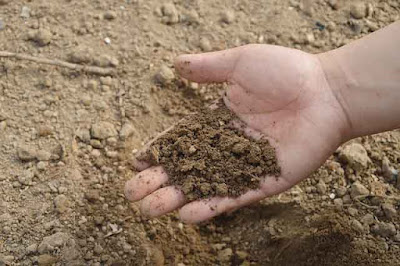No doubt you've learned somewhere that soil tests provide essential guidelines for gardening. Perhaps the "why" and "how" have eluded you. This article might help.
You’ve probably noticed that different types of plants grow in different places. That’s because they are either native or adapted to distinct habitats. Drive through the countryside and you’ll see what I mean. On one side of a hill you might find a hardwood forest. The other side might be predominantly native pine. In another place there will be a grassy meadow. Farther along you might see a bog with sedges and alders. Each area has its own soil type, nutrient levels, drainage and chemistry. The lesson here is that plants thrive in locations and conditions that meet their needs.
Garden spaces are sometimes not so easy to judge. Further inspection and discovery will probably be necessary. Follow a similar exercise to your drive in the country when garden planning. Walk around your landscape taking note of drainage, sun exposure, slope and the plants that are thriving. Even moss and weeds can tell a story, but we'll delve into that some other time.
There are a couple of ways to determine your soil type, chemistry and condition. The first is to take a soil sample for testing. The second is to utilize the USDA Web Soil Survey tool. Taking a soil sample is easy enough. Using the USDA Web Soil Survey tool? Not so much.
A basic soil test will tell you three things: the soil pH (acidity or alkalinity), phosphorus (P), and potassium (K). Nitrogen (N) is not so easy to determine, so test results probably won’t show it. Advanced soil tests can reveal organic content and some minor element content. Keep in mind that a single soil test only provides a “snapshot” in time. Some of the element levels can change over the seasons.
Obtain a soil sample bag or bags from your local Cooperative Extension Service office. Fill in the blanks with your name, address and contact information. Check off the tests you want performed. Collect soil samples from various comparable places around your garden or landscape to provide a soil “profile.” Before taking samples, remove leaves and other debris from the immediate site. Scrape down to the actual soil. Mix the samples thoroughly in a clean plastic bucket. Transfer the mix to the soil sample bag, and return it to the office. A report should be mailed to you.
Using the USDA Web Soil Survey tool is another matter. You might find it here:
https://websoilsurvey.nrcs.usda.gov/app/
I can’t walk you through the steps. It wasn’t intuitive for me. You’ll just have to play around with the website until you figure it out for yourself. Nearly every square foot of the United States is included in the survey. No doubt you’ll find your square feet.
Here’s an example. Zeroing in to a delineated area on my property shows that it consists of two soil types: Pelham loamy sand (5.4% of the area) and Tifton loamy sand (94.6% of the area). What does that mean? According to the USDA, “The Pelham series consists of very deep, poorly drained, moderately permeable soils that formed in unconsolidated Coastal Plain sediments. These soils are on nearly level broad flats, toe slopes, depressions and drainageways.” “The Tifton series consists of very deep, well drained soils that formed in loamy marine sediments. Tifton soils are on interfluves. Slopes range from 0 to 8 percent.” Understanding these characteristics helps me figure out what to plant and where, especially if drainage is important.
With such facts in mind, the gardener can choose suitable crops and where to plant them. Obviously, this isn’t so vital if one is planting in containers or raised beds. However, when the homeowner is planning landscape plantings of trees, shrubs, perennials and vines, they are essential considerations.
You might have some particular plants in mind. If so, read the plant descriptions and learn about their soil requirements. Choose those that seem most compatible with your conditions.
If soil test reports indicate that amendments are necessary, make them weeks or months ahead of planting time to allow them to be incorporated into the soil and take effect.
It’s far easier to select plants appropriate to your situation than it is to dramatically change or amend your native soil to accommodate unsuitable plants of your choosing. Be realistic. Make it easy on yourself. Work with nature, not against it.
Return to GoGardenNow.com.






No comments:
Post a Comment